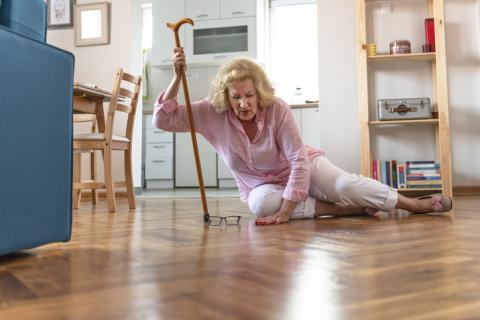Fall Prevention Today Takes a Little More Work—But It’s Well Worth the Effort
As the COVID-19 pandemic is entering its seventh month in the U.S., healthy aging experts are focusing all the more on fall prevention. They report that some older adults are skipping health care appointments, which means their doctor isn’t able to diagnose or monitor health conditions that raise the risk of falls, such as arthritis, osteoporosis, inner ear problems, and loss of vision or hearing. If a senior hasn’t had a recent medication review, they could be at higher risk of side effects such as dizziness and confusion.
Seniors also are spending a lot of time at home, perhaps without the assistance, they usually depend on. Fall hazards may build up, and they may be trying to do certain activities that aren’t safe for them—getting a bowl off the top shelf while standing on a chair, for instance, when a visiting family member might normally do that for them.
But the top challenge they’re facing is inactivity! Stuck at home, many elders are getting much less exercise, and it doesn’t take long for this to cause serious deconditioning. Lack of activity raises the risk of falling, and a sedentary lifestyle makes it more likely that a senior who does fall will suffer a life-threatening and life-changing injury.
This in itself is a serious problem, and inactivity also can have a ripple effect. When an older adult slows down some, their risk of falls goes up a bit … and then they might suffer a fall that causes even greater inactivity as they recover!
Data continues to confirm the strong relationship between exercise and reduced fall risk. In November 2019, University at Buffalo experts announced the results of a study of more than 77,000 older women. The researchers found that those who were regularly active had a lower risk of fractures. Those who were most active lowered their risk the most—but even small amounts of exercise from everyday tasks helped.
“Modest activities, including walking, can significantly reduce the risk of fracture, which can, in turn, lower the risk of death,” noted study author Jean Wactawski-Wende, Ph.D. “Non-recreation physical activity—examples include yard work and household chores such as sweeping the floors or folding laundry—also was inversely associated with several types of fracture.”
Being active not only makes it less likely that a senior will suffer a serious injury in the event of a fall. Seniors who exercise also do better as they recover from a fracture. A June 2020 study from the University of Jyväskylä in Finland found that hip fracture patients who had been active before their injury experienced less overall decline in health as they recovered. And though hip fracture leads to further loss of bone, patients who exercised suffered less bone loss.
Seniors should ask their doctor to recommend a fall-protecting exercise program. This will likely include activities that improve balance, such as tai chi. And balance activities are only the beginning! Aerobic, muscle strengthening and stretching exercises make us more strong and limber, more able to avoid falling, and less likely to be injured if we do fall. Today, the conversation may also include a discussion about ways to stay active while social distancing. Walking, home exercise and virtual exercise classes might be good options.
